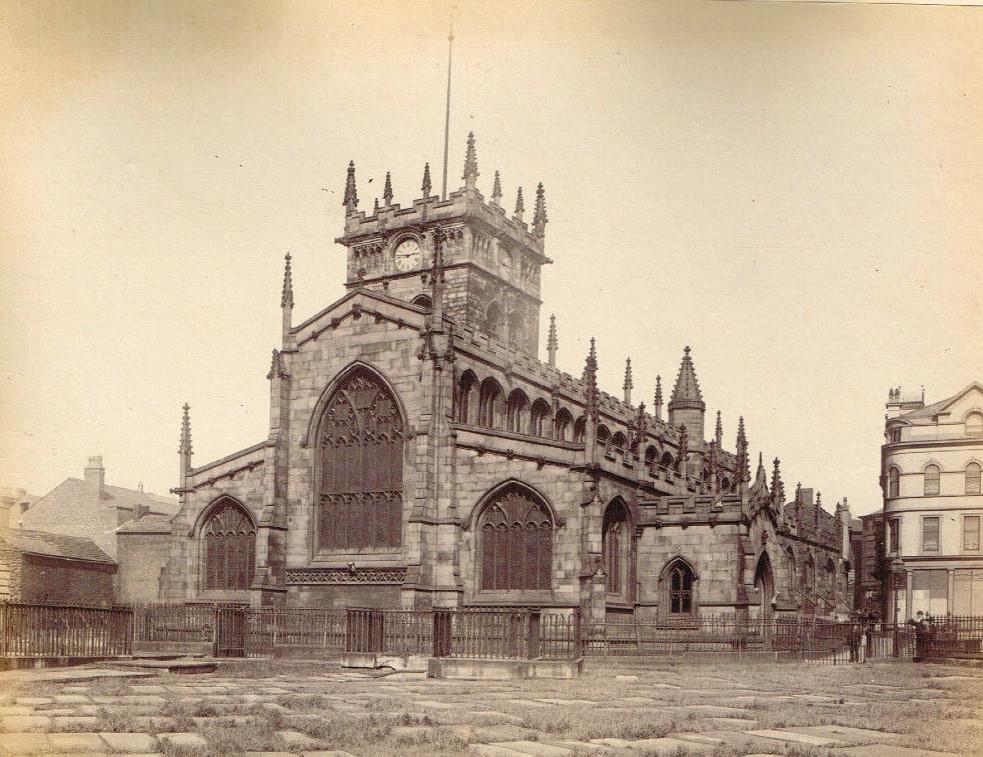Wigan Album
Parish Church, Wigan
13 Comments
Photo: RON HUNT
Item #: 25985
The foreground is listed as the graveyard on old maps.
Wonder what happened to them?
They'll still be there, under the grass. The CofE doesn't like bodies being moved around unless it's really necessary, and it clearly wasn't necessary here.
Interesting point Reverend Long!
I can recall a section of the M6 routed thru a graveyard in the 60's near Wigan. The bodies were disinterred and buried elsewhere! I cannot recall the location but worked for the contractors Tarmac based at Landgate.
They had to remove bodies from a graveyard when they widened the A49 at Worsley Mesnes near to Clapgate Lane that would be in the early 1960's
To think some of Wigan's oldest family's are buried here, some now extinct in name. I have more than a dozen buried here I can't begin to imagine how many bodies there are.
So this is exactly the same scene today? No bodies moved or disturbed, just hidden under grass, if so congratulations to the relevant authorities. Removal or disturbance of buried remains is a highly sensitive issue world wide.
Ron, the road layout has changed around Clapgate Lane and the A49, so the original roads are largely gone, along with their names. The nearest church to the junction is the 1864 Goose Green Methodist Church on what is now Sefton Road, which has no graveyard. That road used to be called Northumberland Street, and it was two streets back from Warrington Road. One street back, and now gone, was Brackley Street, where a Wesleyan Methodist Church was built, with graveyard, in 1849. There is no record of its closure. Goose Green Methodist Church is said to have been founded in 1838. I surmise that the 1864 building replaced the 1849 building down the road, where an earlier building from 1838 once stood. I would also surmise that the graves removed in the 1960s were those of the Brackley Street church, which was at the junction with Clapgate Lane.
Giovanni - the only church I can think of with a graveyard close enough to be affected by the building of the M6 is Our Lady Immaculate RC on Downall Green Road.
I can remember that there were regrets in the CoE Diocese at the time that the line of the M6 hadn't been a little further East at Orrell, so that the over-large Victorian Vicarage for St John's Pemberton might have been demolished.... It's been replaced since, but it was one of the large houses immediately opposite the slip road junction.
There are at least 49,790 recorded burials between 1754 & 1904 (LOPC transcribed records). The 1907 map shows the area to the left and right of the church are also graveyards. To give some perspective on the numbers - the DW stadium capacity is ~ 25,130.
Thanks Rev Long for that info.
The graves would have been reused many times over to accommodate so may bodies. If you look at an old map before the church was rebuilt in the 19c there is a Charnel house at the back of the church. This is where bones were placed after being disinterred.
Also part of the graveyard was dug up to make room for the original L&Y station.
I did wonder how so many bodies had been buried in such a small place. I've read that usually after 5 years or more as preparation for another burial, the dug up bones would be stored in the charnel house, giving space for a new burial. Seems burial was a fairly temporary thing near the Parish Church.